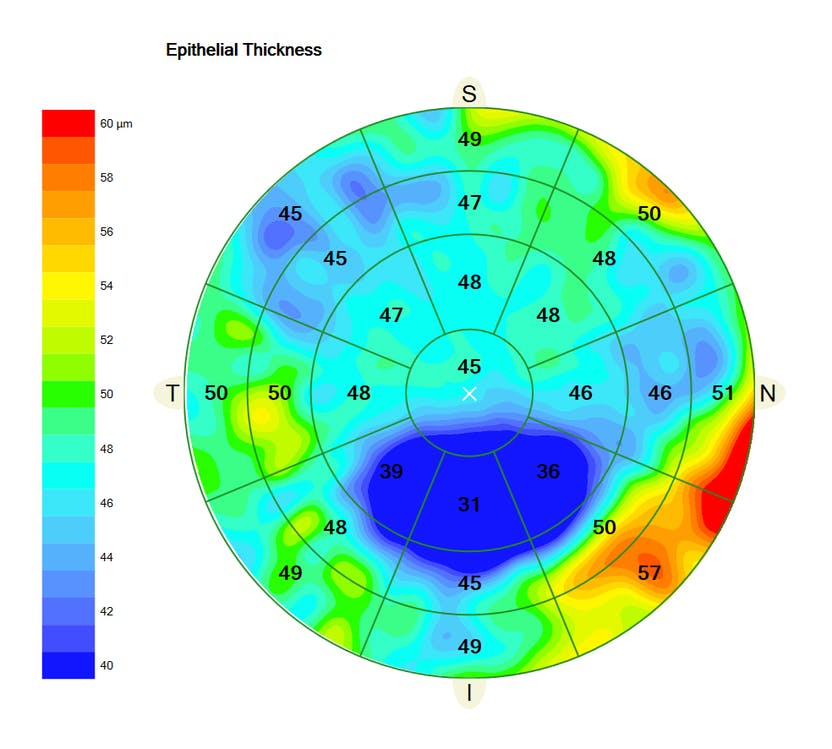 |
Using epithelial maps in pre-op evaluations may indicate a greater number of candidates for refractive surgery. Photo: Carl Zeiss Meditec. Click image to enlarge. |
Screening patients for corneal refractive surgery candidacy remains challenging because it is critical to identify subtle ectatic disease before dramatic changes occur. It also remains largely interpretive and therefore subjective because none of these metrics have proven to be equivalent to or better than expert interpretation of corneal images. Researchers at the Cole Eye Institute in Cleveland have found that using epithelial mapping as part of screening is impactful and can benefit refractive surgical practices.
The study evaluated 100 consecutive patients who presented for refractive surgery screening. Two masked examiners performed a screening based on Scheimpflug tomography, clinical data and patient history and then independently decided on eligibility for LASIK, PRK and SMILE. The examiners were then shown patients’ epithelial thickness maps derived from OCT. Afterwards, the researchers determined the percentage of screenings that changed upon evaluating the epithelial thickness maps, with regard to candidacy for surgery, as well as the ranking of surgical procedures from most to least favorable.
When incorporated into the preoperative evaluation, epithelial thickness maps resulted in ruling in slightly more patients for corneal refractive surgery. Candidacy for corneal refractive surgery changed in 16% of patients after evaluation of the epithelial thickness maps, with 10% of patients screened in and 6% screened out. Surgery of choice changed for 16% of patients, and the ranking of surgical procedures from most to least favorable changed for 25% of patients. The study noted that 11% of patients gained eligibility for LASIK, while 8% lost eligibility for LASIK. The researchers noted no significant difference between the evaluations of the two examiners.
“While these results reflect the surgical decision-making thought processes of the two examiners and are therefore subjective, the almost identical outcomes obtained underscore the significance of the results of the study despite its inherent subjectivity,” the researchers noted. “We hope our work stimulates future studies conducted with numerous masked reviewers based on our preliminary findings regarding the utility of epithelial maps in our refractive surgery practice.”
Asroui L, Dupps WJ, Randleman JB. Determining the utility of epithelial thickness mapping in refractive surgery evaluations. Am J Ophthamol. March 2, 2022. [Epub ahead of print]. |

